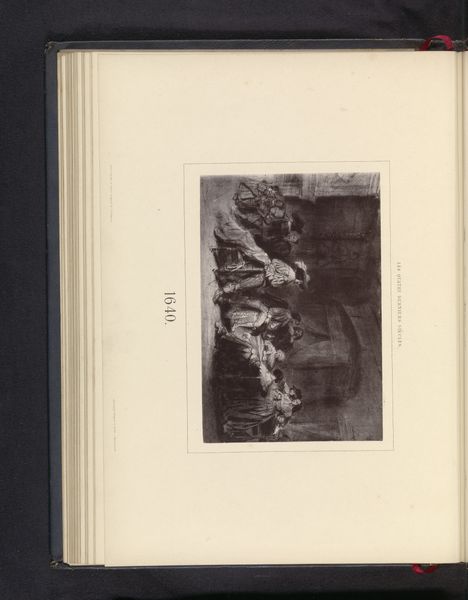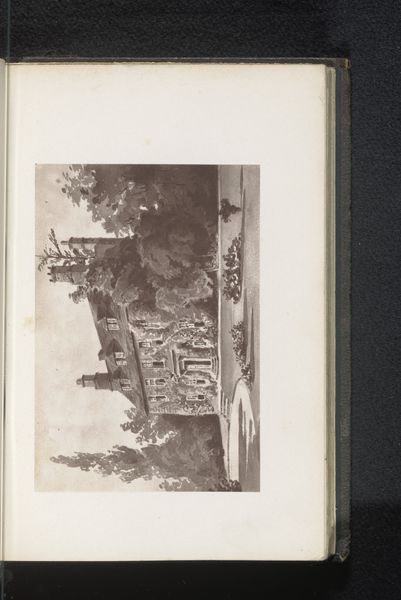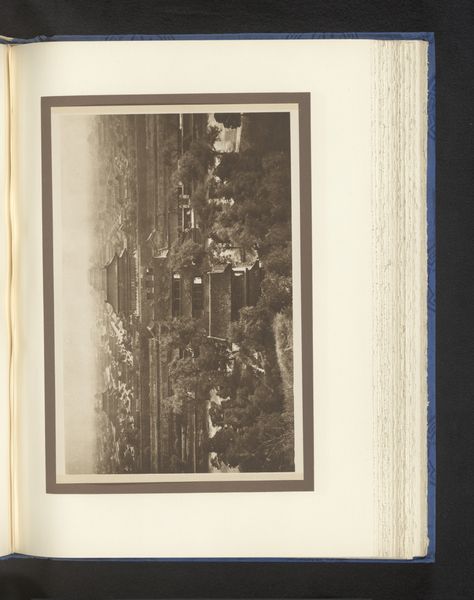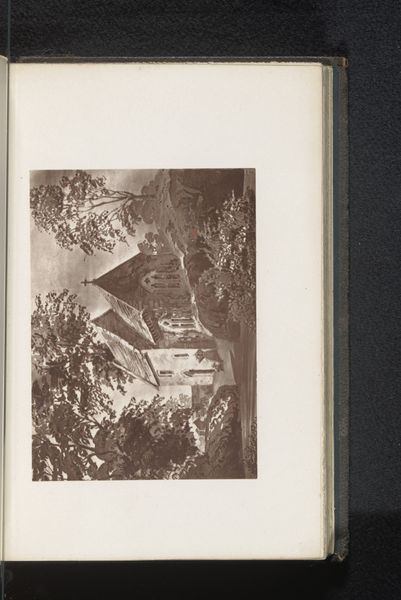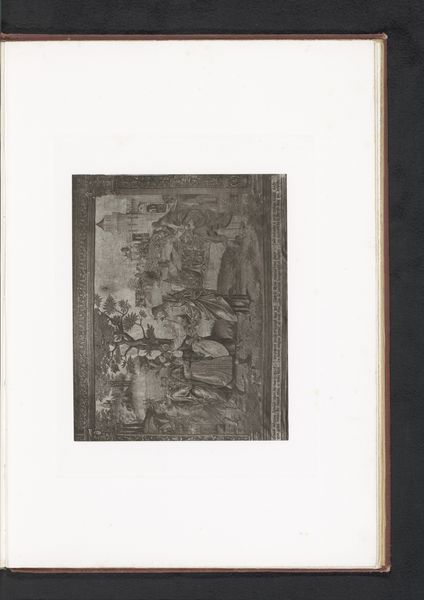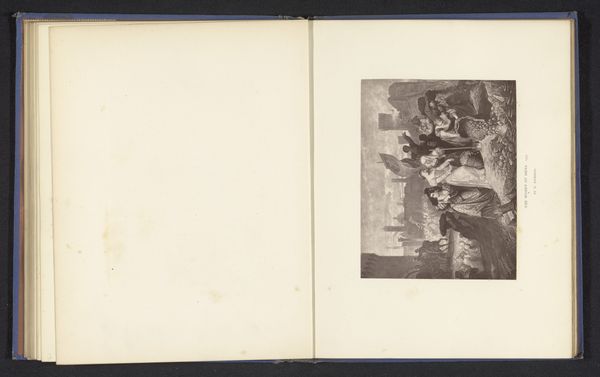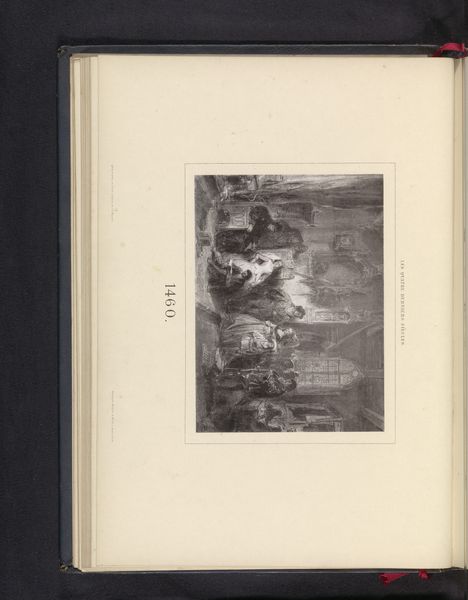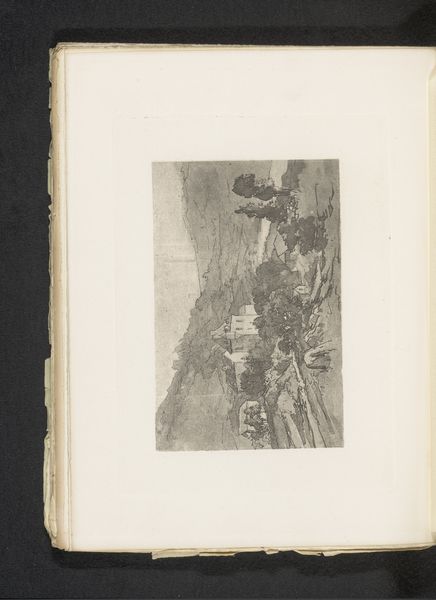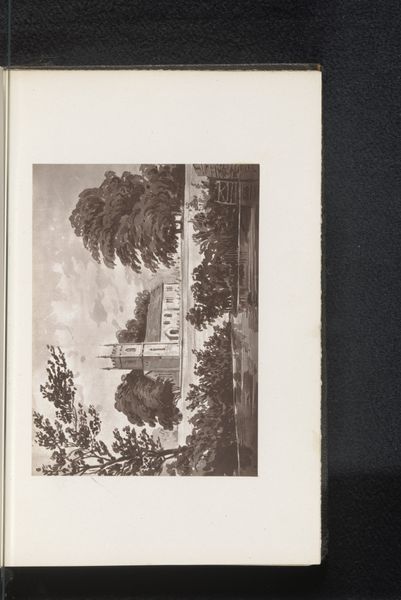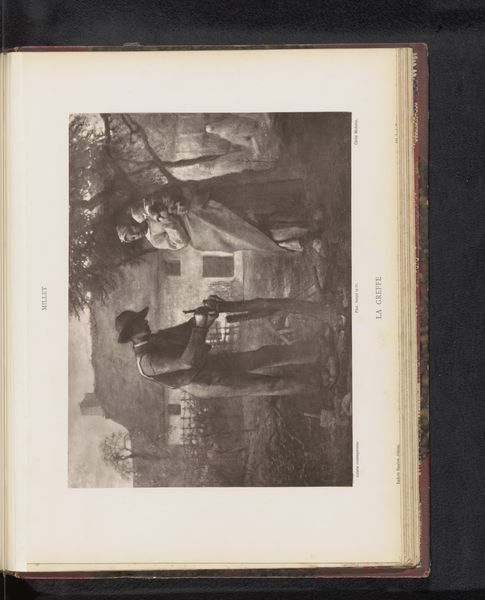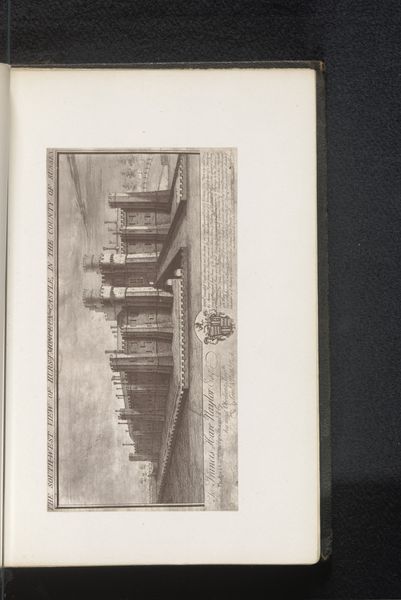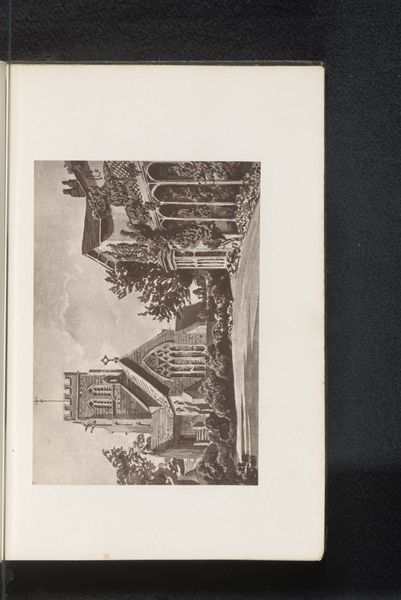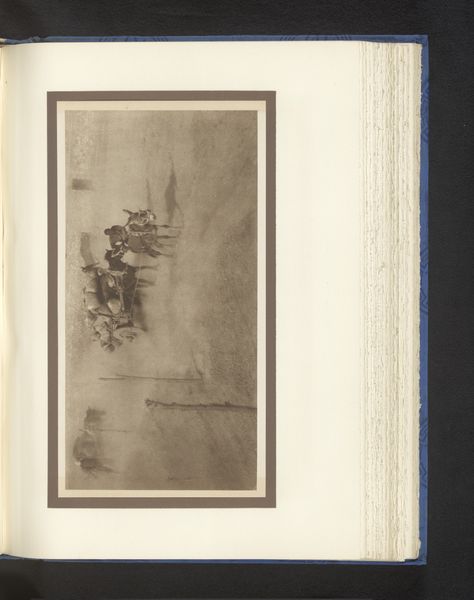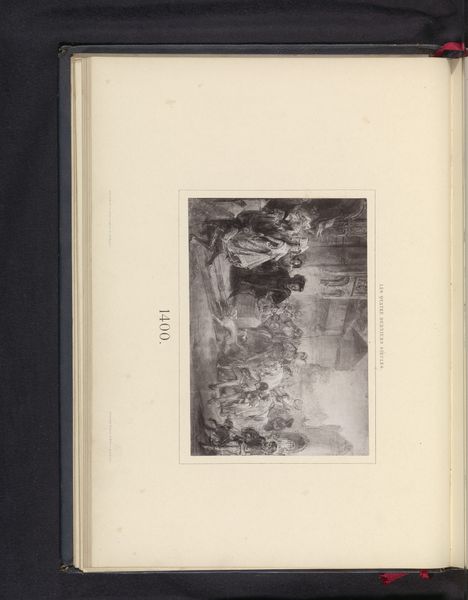
Fotoreproductie van een schildering, voorstellende een gezicht op Saint Mary's Church te Nether Alderley before 1876
0:00
0:00
drawing, pen, architecture
#
drawing
#
landscape
#
coloured pencil
#
pen
#
architecture
#
building
Dimensions: height 83 mm, width 113 mm
Copyright: Rijks Museum: Open Domain
Curator: Before us is an intriguing photo reproduction dating from before 1876. It presents a depiction of Saint Mary's Church in Nether Alderley. It's rendered in pen and colored pencil, giving it a somewhat unusual texture for a reproduction. Editor: It has a wistful, almost haunting quality, doesn't it? The muted tones and slightly blurred details evoke a sense of nostalgia and perhaps a subtle critique of the church's role within a rapidly changing society. The vertical composition also forces the viewer to consider what might lie above and beyond the immediate picture frame. Curator: The artist, whose name is not attached, displays careful attention to the architectural elements, focusing on line and form to establish a clear hierarchy. Note the contrast between the rough foliage surrounding the clean lines of the architecture; this could potentially show some tension between nature and design. Editor: It prompts questions about how religious institutions represent and uphold privilege, but more than that, how their material wealth and permanence overshadow other community needs. This is where I think it becomes important to contextualize its period, just prior to when social upheaval challenged Victorian society and faith. Does this image romanticize the past in an effort to solidify an ideological position? Curator: Well, consider the strategic use of perspective lines converging toward the horizon. This is a conscious method to draw the eye towards the Church spire, so you could definitely be correct. The subtle coloring then helps to give volume to a clear geometrical arrangement. The building’s aesthetic significance is highlighted to reveal a monumental feeling and convey visual harmony and stability. Editor: The "harmony and stability" you observe might be better described as representing an ossified structure resisting social change. And given this is a photographic reproduction, is this an act of accessibility or control in reproducing an artistic narrative of that specific place and its values? This work shows me there is power within the gaze and representation itself. Curator: I find myself thinking more on how the balance of form and depth within the work is remarkable considering its unknown origins and techniques. Editor: For me, I see a complex narrative regarding visibility, representation, and how our historical and social lenses condition how we consider and perceive artworks like this one.
Comments
No comments
Be the first to comment and join the conversation on the ultimate creative platform.
